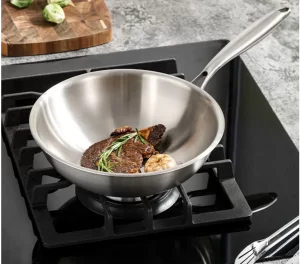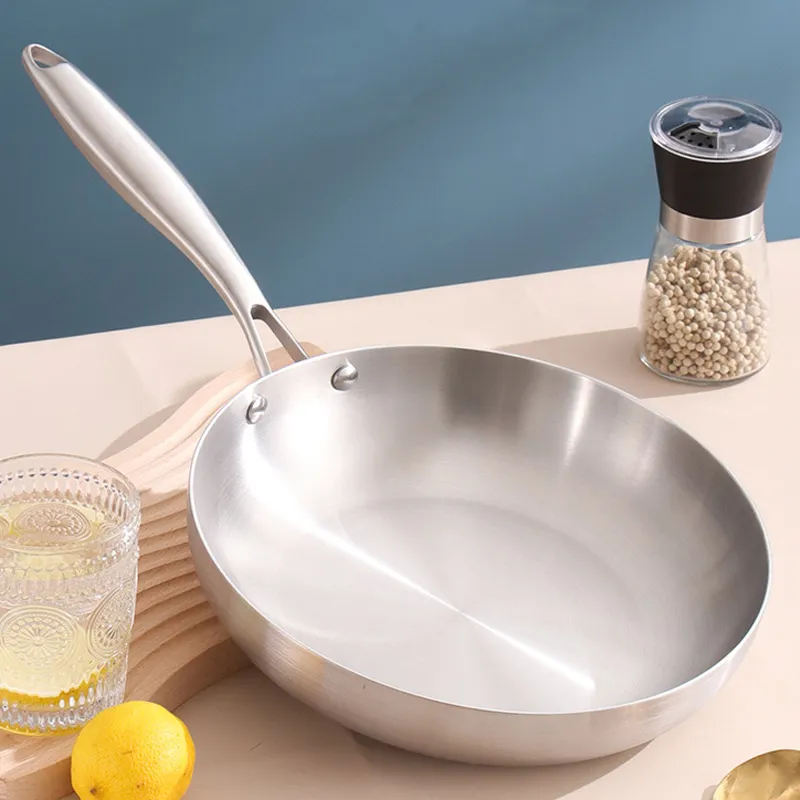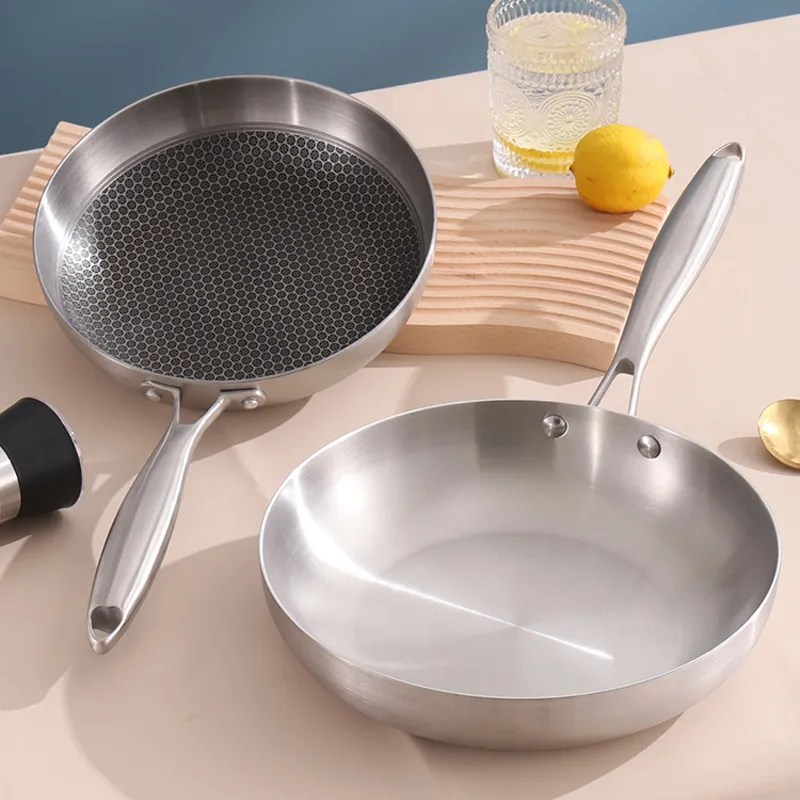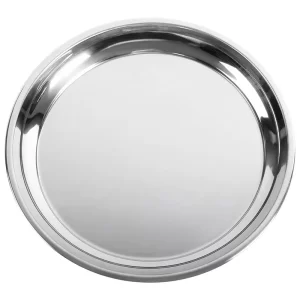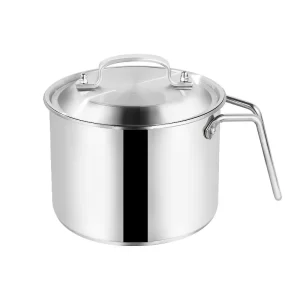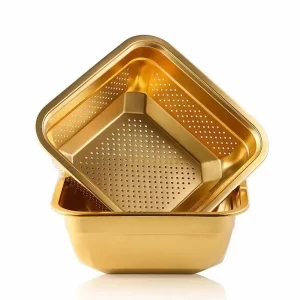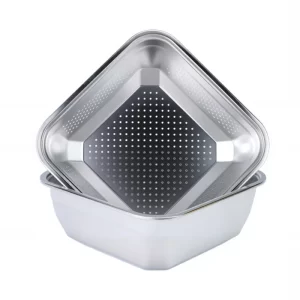As the global ban on PFAS (Permanent Chemicals) is gradually implemented, the demand for PFAS-free frying pans and other cookware made of healthy materials has witnessed an unprecedented growth. Regulations in many European and American countries are accelerating market transformation. For instance, the European Union plans to completely ban kitchenware containing PFAS by 2025-2026, and several states in the United States have already implemented restrictions in advance. This not only reflects the policy level’s emphasis on food safety, but also aligns with the social trend that consumers are paying more attention to healthy diets and sustainable lifestyles after the pandemic. Market data shows that the sales of PFAS-Free frying pans and other cookware in Europe and North America increased by more than 20% year-on-year in 2024, among which ceramic-coated and stainless steel multi-layer cookware were particularly popular. For manufacturers, this is both a challenge and an opportunity – whoever can provide safe, durable, and high-performance fluorine-free cookware first will gain the upper hand in the new round of global kitchenware competition.
What is PFAS, and why is it banned
PFAS (Per- and Polyfluoroalkyl Substances) is a class of synthetic organic fluorine compounds, containing thousands of chemicals such as PFOA and PFOS. It is highly resistant to high temperatures, water, and oil, corrosion, and has very stable chemical properties. It is widely used in the coating of non-stick pans. PFAS hardly decomposes in the natural environment and is known as “Forever Chemicals”, which can accumulate in the human body, animals, and plants for a long time. Scientific research indicates that long-term exposure to PFAS may increase the incidence of cancer, damage liver function, suppress the immune system, and affect fetal development. Due to its widespread use and persistent pollution, many countries around the world have listed PFAS as substances to be restricted or prohibited, aiming to reduce environmental hazards and protect public health.
The current pursuit and requirements for frying pans in the European and American markets
Currently, the demand for PFAS-Free frying pan in the European and American markets is undergoing a comprehensive upgrade, with the core focus on four major directions: health, safety, durability and sustainability, and there are higher standards in the details.
Health and safety
Regulation-driven: The EU REACH regulation has imposed restrictions on over 10,000 PFAS chemical substances. The US EPA has initiated a phased ban plan, and California Proposition 65 also requires strict labeling of hazardous substances.
Material requirements: It must be 100% PFAS-free frying pan and free of potentially risky components such as PFOA, PTFE, lead, cadmium, and nickel.
Certification standards: European and American consumers trust products that have passed multiple certifications, such as LFGB (German Food Contact Safety Certification), FDA, ISO 9001, and SGS food safety testing.
Durability standards
Temperature resistance: It needs to withstand long-term cooking at high temperatures ranging from 260°C to 300°C without deformation or delamination.
Scratch resistance test: Some importers will require that the coating pass the metal scraper scratch resistance test of more than 5,000 times or the standard of dry burning for 30 minutes without damage.
Uniformity of heat conduction: The thickness of the pot bottom should be ≥2.0mm, with a three-layer composite bottom or equivalent heat conduction structure. The heat difference should be controlled within ±5°C to prevent local overheating and burning of the food.
Non-stick performance (PFAS-free alternative)
Mainstream solutions: The high-end market favors Ceramic Coating and Sol-Gel coating. Some chefs and restaurants tend to use mirror-polished stainless steel bare pots with grease.
Durability period: Importers tend to choose PFAS-Free frying pan products that can maintain non-stickiness for at least 2 years for household use (approximately 5,000 cooking cycles).
Easy to clean: It is required that most residues can be removed by rinsing with clean water, reducing the use of chemical cleaners.
Sustainability and environmental protection
Material recycling: Tend to use recyclable stainless steel (such as 304/316), recycled aluminum, and reduce plastic components.
Production environmental protection: Some brands require a carbon footprint report to prove that the energy usage, wastewater treatment, and discharge in the production process meet the standards.
Packaging trend: Replacing foam plastic with plastic-free degradable paper packaging or reusable cloth bags.
Design and functional details
Stove compatibility: It must support all platforms, including induction furnaces, gas stoves, electric stoves, ceramic stoves, etc.
Ergonomics: The handle should be heat-resistant, anti-slip, able to withstand oven temperatures above 200°C, and have a comfortable grip.
The function of the pot lid: The European and American markets are enthusiastic about visual glass pot lids and require them to have an anti-overflow design and sealing performance.
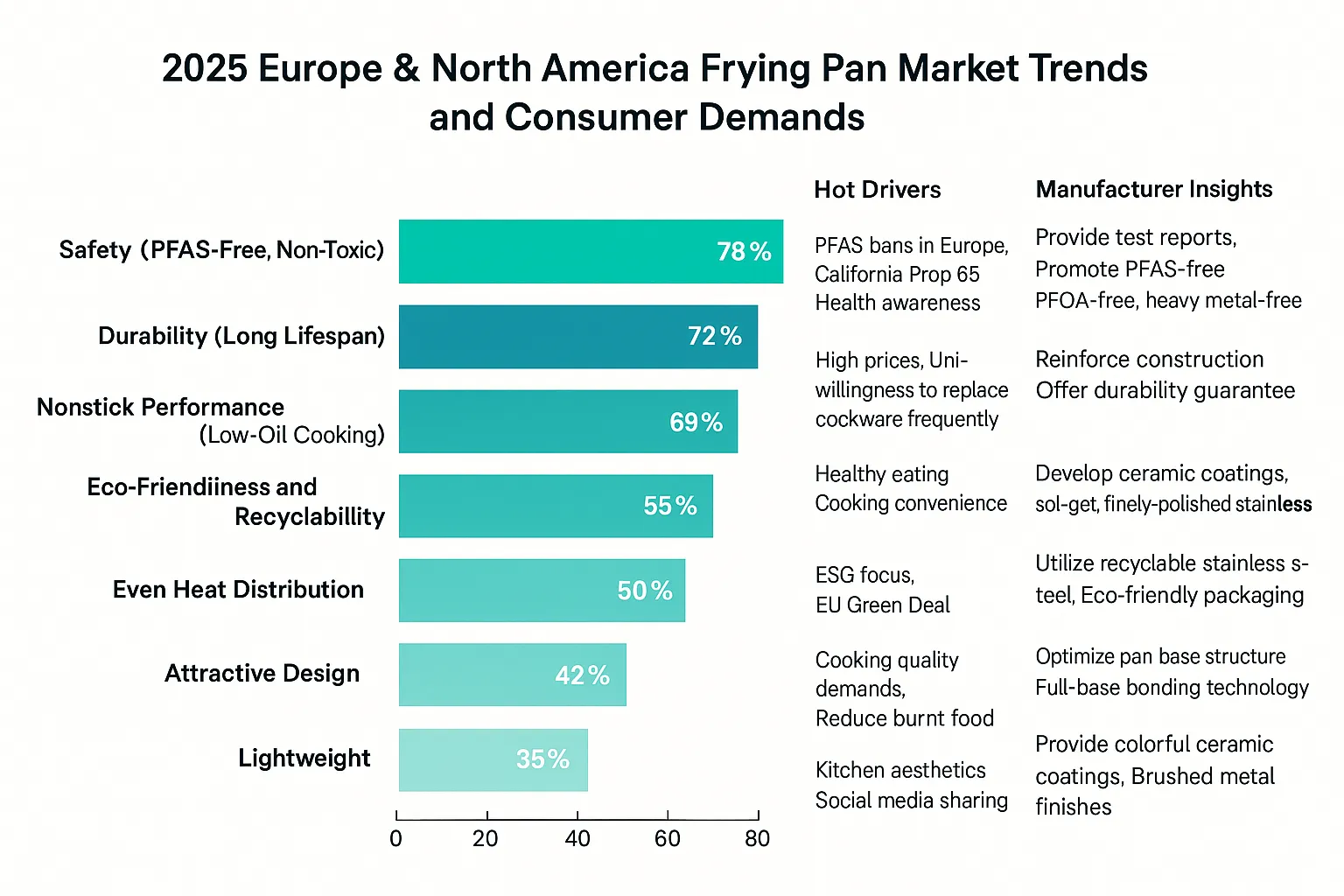
Alternative coatings: ceramic, sol-gel, stainless steel bare pot
Ceramic Coating
Introduction: With silica as the main component, it forms a coating through high-temperature curing, free of PFAS and PFOA.
Advantages: Heat resistance (up to 450°C), health and safety, diverse colors available, and natural non-stick effect.
Disadvantages: The coating is hard but brittle. Frequent drops or use with a metal shovel will shorten its lifespan (about 1 to 2 years for household use).
Applicable population: Family users who pay attention to health and appearance.
Sol-Gel coating
Introduction: The inorganic/organic mixed coating formed through the sol-gel process has higher hardness and adhesion than traditional ceramics.
Advantages: No PFAS, good scratch resistance, temperature resistance above 300°C, and not easy to fall off.
Disadvantage: Its non-stickiness is slightly inferior to that of ceramics and it needs to be used in combination with grease to achieve the best effect.
Applicable groups: Restaurants, frequently used households, and those who pursue durability.
Stainless steel multi-layer composite bottom bare pot (SS 304/SS 316)
Introduction: Stainless steel + aluminum (or copper) composite structure, uncoated design, surface polished or brushed, relying on oil to prevent sticking to the food itself.
Advantages: Long service life (over 5 years), no coating at all, can withstand ultra-high temperatures (500°C+), uniform heating, and reduces sticking to the pot caused by local overheating.
Disadvantages: High manufacturing cost, requires cooking skills (oil temperature control), and beginners are prone to sticking to the pan.
Applicable groups: People who pursue uniform cooking, cooking enthusiasts, and those who seek long service life and high-temperature cooking.
How to make PFAS-Free frying pan more durable and non-stick with safe materials
To make the wok both durable and as non-sticky as possible without PFAS coating (i.e., without using fluorine coatings such as PTFE and PFOA), efforts can be made from three aspects: material selection, surface treatment, and structural optimization.
Material selection (Durable foundation)
Stainless steel 304/316: Corrosion-resistant, long service life, and high food contact safety.
Surface treatment process (the key to non-stickiness)
Mirror Polishing: Polish the inner surface of stainless steel to a surface close to a mirror finish to reduce the contact points between food and metal, making it easier for eggs and other items to slide.
Micro-texturing: Create extremely fine textures on the surface of the pot to reduce the contact area with food and protect the oil film layer at the same time.
Plasma Ceramic Coating: An emerging technology that can form a super-hard ceramic layer on the metal surface, taking into account both safety and wear resistance.
Structural optimization
Three-layer composite + Sol-gel + ceramic surface layer (recommended combination)
Advantages: Uniform heat conduction, good coating adhesion, scratch resistance, suitable for high-end/mid-to-high-end markets.
Disadvantages: High cost and complex process (the curing curve needs to be optimized).
Pure stainless steel 304+ laser microstructure + Sol-gel/ ceramic
Advantages: Food safety, corrosion resistance, and high-end visual appeal; Laser texture enhances non-stick feel.
Disadvantage: Bare stainless steel conducts heat slowly and needs to be thickened or have a composite bottom to improve heat conduction.
お問い合わせ
We are a professional PFAS-free frying pan manufacturer with over twenty years of production experience. We have long been providing products that meet the strict quality standards of the European and American markets, covering a wide range of specifications and design styles. We also support all-round customization from handles, coatings, lids, to logos and packaging. Relying on advanced production equipment and a strict quality control system, we can ensure that every PFAS-Free frying pan meets international standards in terms of safety, durability, heat conduction performance, and appearance details. Whether it’s bulk purchasing, brand OEM/ODM, or creating differentiated products for retail and e-commerce, we can provide efficient one-stop solutions. Welcome to initiate inquiries, obtain quotations and samples, and embark on a journey of cooperation together.

